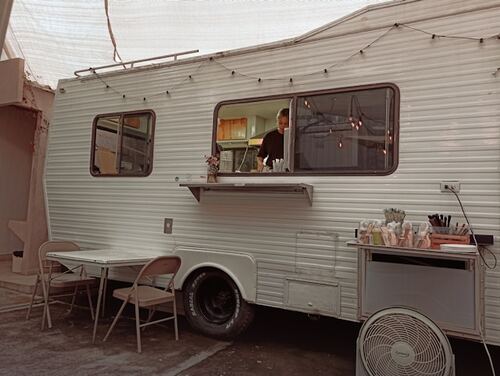
An important warning when the weather is conducive to wildfire spread is the red flag alert. See the red flag warning alert, or alerta de bandera roja (clima propicio para incendios). Recognize the terrible consequences of the situation as well as the communities living in high-risk zones for fires. Several environmental factors that could quickly increase the number of wildfires are included when a red flag warning is issued. The red flag warning and the circumstances that lead to these will be covered in this article.
An important warning when the weather is conducive to wildfire spread is the red flag alert. See the red flag warning alert, or alerta de bandera roja (clima propicio para incendios). Recognize the terrible consequences of the situation as well as the communities living in high-risk zones for fires. Several environmental factors that could quickly increase the number of wildfires are included when a red flag warning is issued. The red flag warning and the circumstances that lead to these will be covered in this article.
What Causes the Red Flag Warning to Fly?
When certain meteorological conditions exist that may increase the risk of wildfires, a red flag warning is issued. A few elements, such elevated temperatures, blustery gusts, and elevated humidity levels, can exacerbate these alert conditions. Due to these circumstances, flames have the potential to spread swiftly and endanger both people and property.
Warm Weather Can Boost the Risk of Fire
The main element that goes into creating a red flag warning is heat or warmth. Excessive heat causes the grass to dry up more quickly, which raises the possibility of a fire. An unstable atmosphere can be produced by warm air. In order to reduce the risk of wildfires, it is crucial to exercise caution and vigilance when the temperature rises.
Minimal Humidity
Red flag warnings are more serious when there is little humidity. The vegetation becomes more flammable when the humidity level drops because the moisture content of the foliage decreases. Additionally, dry air speeds up the rate of vegetation fire by making it easier for flames to spread quickly across the surrounding plants. An essential red flag alert for managing the fire situation is keeping an eye on the humidity level.
Situations of Drought
Drought-related conditions can make wildfires more likely to occur nearby. Extended periods of dryness result in parched vegetation, which provides copious amounts of fuel for wildfires and makes vegetation more prone to igniting. Fire breakouts may become more likely as a result. When there is a drought, a red flag warning is frequently issued to emphasize the risk of wildfire.
The Effect of Powerful Winds
When there is a red flag, strong winds might raise the possibility of a wildfire. The flames can spread quickly and convey the burning particles far by wind. Windy conditions can make it difficult to put out a fire and reduce its temperature. It can be helpful to manage fires during a red flag event to understand wind patterns and their effects.
The Red Flag Warning Protocol
It’s critical to abide by the safety procedures that the local authorities set forth when there was a red flag alert. Steer clear of fire-prone behaviors like burning outside or using equipment that can produce heat or sparks. Keep up with the weather and heed any instructions or protocols. In times like these, being ready and acting quickly helps lessen the effects of wildfires.
Keep an eye on the Red Flag Warning
It’s critical for everybody living in a region where there is a risk of fire to stay informed about red flag warnings. Keep an eye on the news, the weather forecast, and the communication channels for any developments regarding the situation. Become acquainted with the scenario that was used for the red flag warning. Protect or safeguard people and property by taking preventative action. By remaining informed and being ready, you and the community can react to the threat of wildfires during a red flag situation more effectively.
Group Readiness
During red flag warnings, the damage of wildfires can be significantly reduced by community preparedness. Maintaining distance around your homes and taking part in community wildfire preparedness events are two ways you may practice safe fire management. Work together to prevent wildfires with your neighbors, the local fire department, and emergency personnel.
Preparedness of Firefighters
During red flag events, the firemen are ready to respond to any wildfire with ease and on high alerta de bandera roja (clima propicio para incendios). Prioritizing resource allocation and coordination is how the fire departments respond to fires. Evacuation orders and community cooperation can improve the overall process and aid firefighter efforts. expressing gratitude for the firefighters’ hard work and commitment during the red flag alert.
Method of Evacuation
It’s crucial to adhere to the safe evacuation protocol during a red flag alert. Have a plan for your escape and assemble an emergency kit with the necessities. Be informed on the latest orders from the authorities and the routes for evacuation. Put your personal safety first and leave as soon as instructed.
Public Safety Actions
During a red flag warning, public safety measures are crucial to lowering the risk of wildfires. It is imperative to impose temporary limitations on activities that may ignite a fire, such as using fireworks, sparks, or heated equipment. To promote awareness and a sense of responsibility, it is crucial to inform the public about the fire and the safety measures.
In conclusion alerta de bandera roja (clima propicio para incendios)
It is crucial that communities take preventative measures to stop fire breakouts and be informed about the alerta de bandera roja (clima propicio para incendios). by being aware of the environmental elements that can reduce the chance of a fire. By adhering to the procedures, people can reduce the threat caused by wildfires. Reduce the impact of wildfires by being aware, organized, and focused on your own safety.





